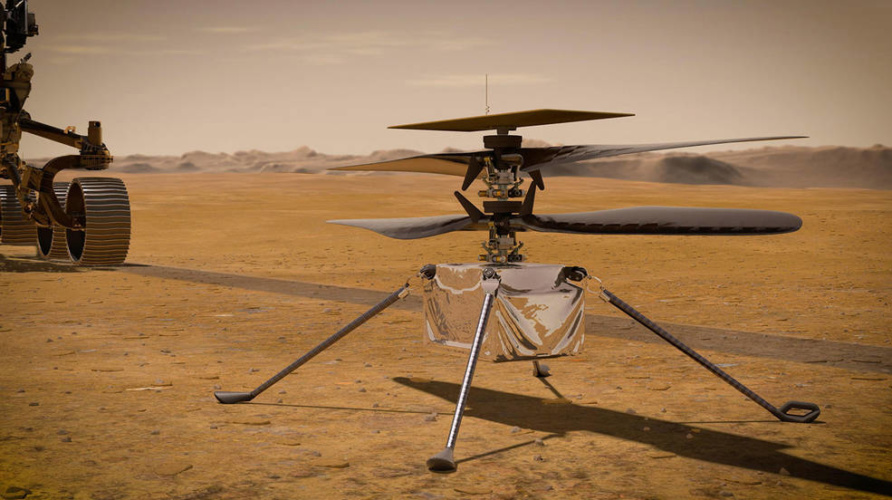The video shows the final moments of Perseverance’s entry, descent, and landing (EDL), known as the ‘seven minutes of terror’ by the scientists and researchers that have invested years of their professional lives getting the mission to that make-or-break point. Known affectionately as ‘Percy’, the rover is the largest and most complex ever sent into space, weighing in at over 1,000kg.
NASA’s Perseverance Rover begins Mars adventure
Mars 2020 mission gears up for a red planet return
From the moment of parachute inflation, the camera system covers the entirety of the descent process, showing some of the rover’s vertical journey to its landing zone in Mars’ Jezero Crater. The footage from high-definition cameras aboard the spacecraft starts 11 kilometres above the surface, showing the supersonic deployment of the largest parachute ever deployed in space, and ends with the rover’s touchdown in the crater.
Five commercial off-the-shelf cameras located on three different spacecraft components collected the imagery. Two cameras on the back shell took pictures of the parachute inflating. A camera on the descent stage provided a downward view – including the top of the rover – while two on the rover chassis offered both upward and downward perspectives.
“This video of Perseverance’s descent is the closest you can get to landing on Mars without putting on a pressure suit,” said Thomas Zurbuchen, NASA associate administrator for science.
“It should become mandatory viewing for young women and men who not only want to explore other worlds and build the spacecraft that will take them there, but also want to be part of the diverse teams achieving all the audacious goals in our future.”
https://twitter.com/NASAPersevere/status/1363937472971907072
Alongside the spectacular video footage, NASA also released the first audio recordings from Perseverance’s microphone. The off-shelf device did not collect usable audio data during the descent, but survived the landing and obtained sounds from Jezero Crater on February 20. A Martian breeze is audible for a few seconds, as well as the mechanical sounds of the rover operating on the surface.
“We know the public is fascinated with Mars exploration, so we added the EDL Cam microphone to the vehicle because we hoped it could enhance the experience, especially for visually-impaired space fans, and engage and inspire people around the world,” said Dave Gruel, lead engineer for Mars 2020 Perseverance’s EDL camera and microphone subsystem at JPL.
One of the big events of the coming weeks that many space fans are looking forward to is the maiden flight of Ingenuity, the tiny 2kg helicopter attached to Perseverance that will hopefully become the first rotor vehicle to fly on another planet. The vehicle will remain attached to the rover for the next 30-60 days as calibration and testing are completed. According to NASA, both the helicopter and its base station are in good shape.

After Perseverance deploys Ingenuity to the surface, the helicopter will then have a 30-Martian-day (31-Earth-day) experimental flight test window. If it survives the overnight Martian temperatures of minus 90 degrees Celsius, NASA will proceed with the first flight. A successful take-off and hover will mean over 90 per cent of the project’s goals will have been achieved. If it can land successfully and remain operable, up to four more flights could be attempted, each one building on the success of the last.
“We are in uncharted territory, but this team is used to that,” said MiMi Aung, project manager for the Ingenuity Mars Helicopter at JPL. “Just about every milestone from here through the end of our flight demonstration programme will be a first, and each has to succeed for us to go on to the next.”





Nanogenerator consumes CO2 to generate electricity
Nice to see my my views being backed up by no less a figure than Sabine Hossenfelder https://youtu.be/QoJzs4fA4fo